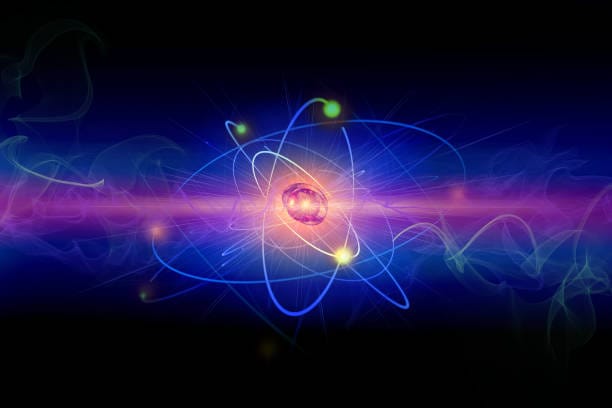Physics is the quiet engine behind everything—every falling apple, every streaming video, every heartbeat. It’s the thread that ties galaxies to atoms, thunder to quantum foam. Yet for something so massive in scale and so intimate in impact, physics is built on a surprisingly elegant foundation: laws. Unchanging. Unyielding. Universally true.
But these laws are not dull decrees written in textbooks. They’re profound insights into the structure of the universe—poetic in their simplicity, stunning in their consequences. The laws of physics are not just about numbers. They are stories told in the language of reality itself.
So let’s dive deep into ten of the most fundamental laws of physics—not as dry equations, but as grand ideas that illuminate why the universe behaves the way it does. Whether you’re a curious student or a lifelong science enthusiast, these laws will help you see the world with new eyes.
1. Newton’s First Law of Motion: The Reluctance of Stillness and Movement
“An object at rest remains at rest, and an object in motion continues in uniform motion unless acted upon by an external force.”
This law, often called the Law of Inertia, is where classical physics begins. Newton didn’t invent this idea, but he refined it and gave it the mathematical backbone that still holds up today.
The magic of this law lies in what it doesn’t say. It doesn’t require a force to keep something moving. That’s counterintuitive. We’re used to things slowing down: a rolling ball, a speeding car. But that’s because of friction, not because the object wants to stop. In the vacuum of space, a pebble thrown from your hand will drift forever unless something interferes.
This law was revolutionary in its day because it challenged the ancient Aristotelian view that motion required constant effort. Newton showed us that it’s not motion that needs explaining, but changes in motion.
It’s inertia that keeps Earth orbiting the Sun. It’s inertia that keeps your coffee from flying out of the cup—until you hit the brakes.
2. Newton’s Second Law of Motion: The Equation That Moves the World
“The acceleration of an object is directly proportional to the net force acting on it and inversely proportional to its mass.”
F = ma
This is not just a formula. It’s a universal decoder ring for every push, pull, launch, and explosion in the cosmos. Whether it’s a rocket launching into orbit or a soccer ball being kicked, this law quantifies how much force is required to move something.
What makes this law powerful is its predictive ability. It tells us how fast something will accelerate when you apply a certain force. A bigger force? Faster acceleration. A heavier mass? Slower acceleration.
Want to build a bridge, design an engine, or model a planetary orbit? This is your starting point.
The genius of F = ma lies in its simplicity. It collapses the complexity of motion into three variables and turns physics from a descriptive field into a predictive one.
3. Newton’s Third Law of Motion: The Universe Pushes Back
“For every action, there is an equal and opposite reaction.”
This law is easy to visualize but hard to fully appreciate. It explains why you move forward when you push backward on the ground. It explains how a rocket propels upward by ejecting gas downward. It explains why the recoil from a gun kicks backward when a bullet fires forward.
It also underpins all of our understanding of conservation of momentum, especially in isolated systems.
But it goes deeper. Newton’s Third Law is a reminder that the universe is not passive. Every time you act on it, it responds. Every movement, every force, every interaction—there’s always a reply. Sometimes visible. Sometimes not. But always there.
4. The Law of Universal Gravitation: The Pull That Binds the Cosmos
“Every mass attracts every other mass with a force that is proportional to the product of their masses and inversely proportional to the square of the distance between them.”
F = G (m₁m₂ / r²)
Gravity is the silent sculptor of the universe. It’s what shapes stars, creates planets, and anchors us to the Earth. Newton’s law of gravitation was a triumph of human imagination—a way to explain the fall of an apple and the motion of the Moon with the same principle.
It was also the first great unifying theory in physics. Suddenly, the heavens and the Earth were governed by the same rule.
But gravity is peculiar. It’s the weakest of the fundamental forces, yet it dominates the large-scale structure of the cosmos. Why? Because it only attracts. It doesn’t cancel out like electric charges do. Everything pulls everything else.
This law set the stage for Einstein’s even deeper insight into gravity as curved spacetime—but as an approximation, Newton’s law still flies spacecraft, predicts eclipses, and steers satellites around the Earth with stunning accuracy.
5. The First Law of Thermodynamics: Energy Cannot Be Created or Destroyed
“The total energy of an isolated system is constant.”
This is the grand law of conservation of energy. It means that in any closed system, the total amount of energy remains the same—it just changes form.
Turn on a light bulb? Electrical energy becomes light and heat. Eat a meal? Chemical energy fuels your muscles. Fire a rocket? Stored chemical energy becomes kinetic energy and heat.
Energy moves. It transforms. But it never vanishes. This principle is sacred in physics. It’s what makes perpetual motion machines impossible. It’s why every power plant, every engine, every metabolism obeys limits.
This law is also deeply spiritual in a way—it tells us that the energy that made the stars shine is the same energy in your cells right now. Nothing is ever truly lost. It just becomes something else.
6. The Second Law of Thermodynamics: Entropy Always Wins
“In any energy transfer or transformation, the total entropy of a closed system will increase over time.”
Entropy. The great spoiler of perfection. The quiet force that ensures ice melts, batteries drain, and stars die.
This law explains why processes are irreversible. It’s why heat flows from hot to cold, never the other way around. It’s why your bedroom gets messier with time unless you intervene. Entropy is a measure of disorder, and the universe loves disorder.
But entropy isn’t chaos. It’s statistical. It means there are more ways for things to be disordered than ordered. The Second Law tells us that the universe is on a one-way street toward equilibrium.
And yet, this law also explains life. Life fights entropy—temporarily—by creating order using energy from the Sun. But the overall entropy of the system still rises. Even we are part of this grand unraveling.
Entropy gives time its arrow. Without it, there would be no past or future—only a meaningless blur.
7. The Theory of Relativity: Time and Space Are Not Absolute
Special Relativity (1905):
“The laws of physics are the same for all observers in uniform motion, and the speed of light is constant.”
General Relativity (1915):
“Gravity is not a force, but a curvature of spacetime caused by mass and energy.”
Einstein didn’t just write laws. He rewrote the concept of what a law could be.
In Special Relativity, he shattered Newton’s idea of absolute time. Moving clocks tick slower. Moving objects contract. Mass increases with speed. And nothing can go faster than light. These aren’t philosophical ideas—they’re measurable facts, confirmed by particle accelerators and GPS satellites alike.
Then came General Relativity—a theory of gravity not as a force but as geometry. Massive objects bend spacetime, and objects follow these curves. This elegant theory predicted black holes, gravitational waves, and the expansion of the universe.
Einstein’s equations are beautiful, subtle, and eerily accurate. And they whisper a deep truth: the universe is stranger than we think—but not stranger than we can understand.
8. The Law of Conservation of Momentum: The Physics of Movement and Collisions
“In a closed system, the total momentum remains constant.”
Momentum is mass in motion, and it is one of the most deeply conserved quantities in nature. Whether it’s two billiard balls clacking, cars crashing, or planets slingshotting around stars, the total momentum before and after remains the same.
It’s this law that allows physicists to work backward through time—to reconstruct collisions, explosions, and even the birth of galaxies.
It’s also the law behind recoil, jet propulsion, and spacecraft navigation.
Momentum conservation isn’t just a physics principle. It’s a cosmic contract—what goes in must come out. Motion must balance. Always.
9. Coulomb’s Law: The Force Behind Chemistry and Lightning
“The force between two electric charges is proportional to the product of the charges and inversely proportional to the square of the distance between them.”
F = k (q₁q₂ / r²)
Where gravity binds the stars, electromagnetic force builds everything else.
Coulomb’s Law governs how charged particles interact. It’s what keeps electrons bound to nuclei. It’s what allows atoms to bond into molecules. It’s the reason your hair stands up when rubbed with a balloon. It’s the source of lightning splitting the sky.
It’s also the foundation of electrical engineering, chemistry, and quantum physics. Coulomb’s Law is Newton’s Law for electric charges—and like gravity, it follows the beautiful inverse-square rule.
Without this law, there would be no atoms. No electricity. No chemistry. No life.
10. The Law of Wave-Particle Duality: The Quantum Paradox
“Every particle exhibits both particle and wave properties.”
This is not a classical law in the traditional sense. It’s a quantum truth. And it’s weird.
Light behaves like a wave—it diffracts, interferes, bends around corners. But under the right conditions, it acts like a stream of particles (photons). Electrons, once thought to be particles, show wave-like interference when passed through slits.
This duality is at the heart of quantum mechanics. It defies intuition but agrees perfectly with experiment. It’s why electrons don’t spiral into atoms. It’s how lasers work. It’s the reason for semiconductors and quantum computers.
The universe at small scales doesn’t follow our logic. It writes its own rules—and invites us to marvel at them.
Conclusion: The Symphony of Laws
The laws of physics are not prison bars. They are symphonic rules that allow infinite melodies. Each law, each equation, is a note in the grand score of the cosmos. Together, they orchestrate the birth of stars, the beating of hearts, and the breath of galaxies.
They tell us we live in a universe that is comprehensible. Not easy. Not tame. But understandable. That is the ultimate gift of physics: the ability to see through the chaos and glimpse the order underneath.
And if the laws seem like poetry, perhaps that’s because they are. The universe, it turns out, writes in verse.






